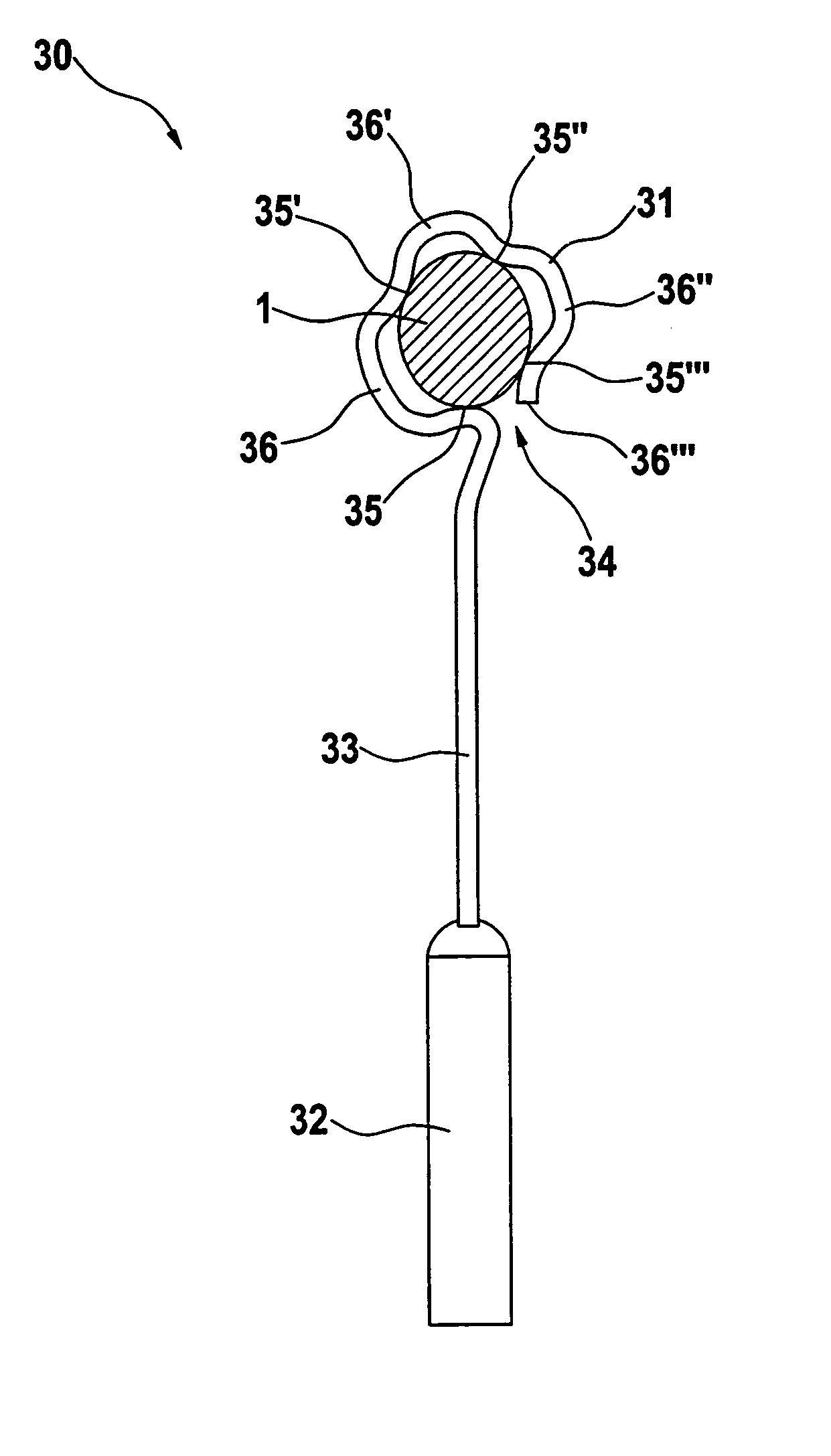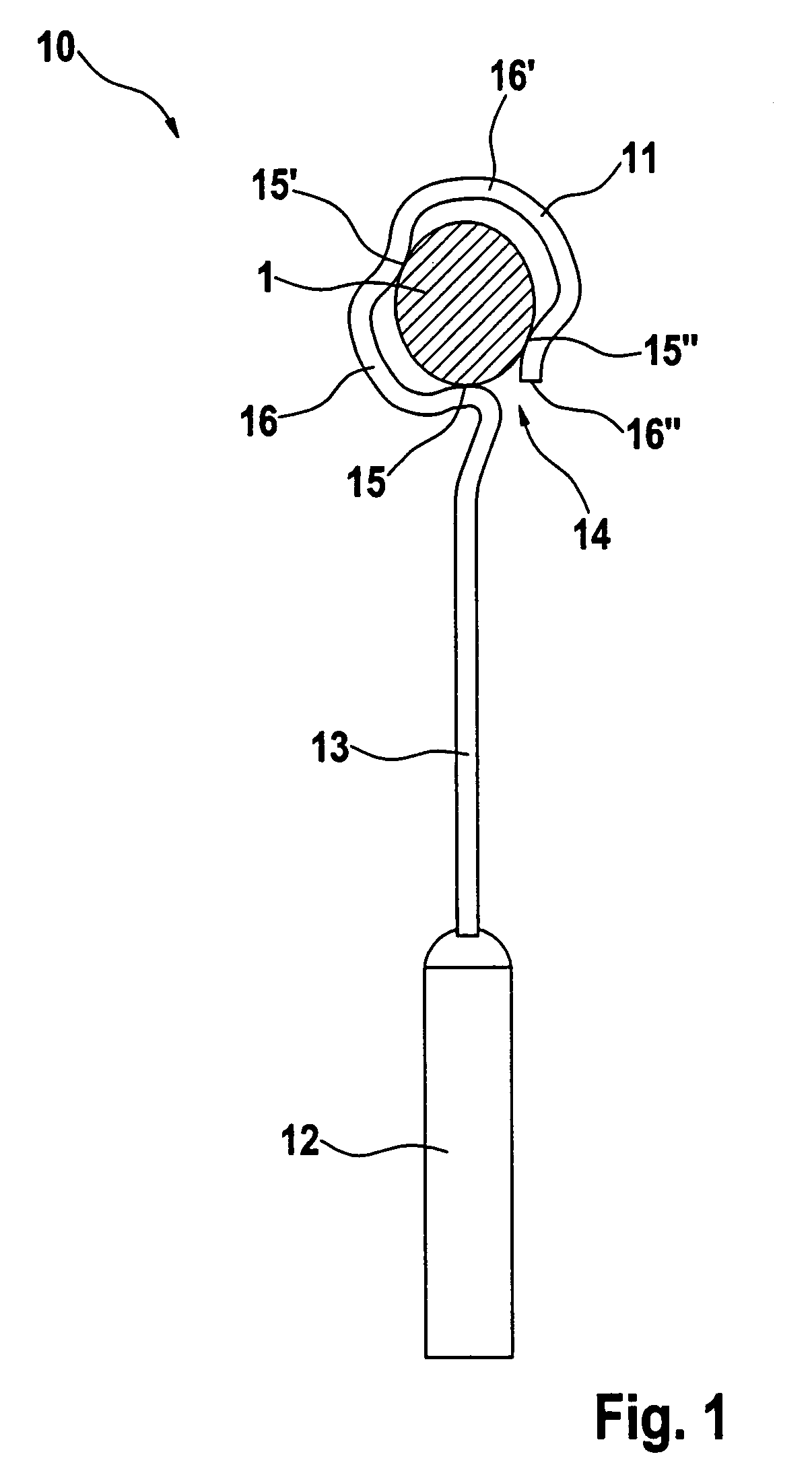Auditory ossicle prosthesis
a technology for ossicle prosthesis and ossicle, which is applied in the field of ossicle prosthesis, can solve the problems of difficulty in establishing reasonableness for operators, and difficulty in establishing reasonableness in practi
- Summary
- Abstract
- Description
- Claims
- Application Information
AI Technical Summary
Benefits of technology
Problems solved by technology
Method used
Image
Examples
Embodiment Construction
[0039]In all the figures in the drawing, the engaged member of the ossicular chain is designated by reference number 1 and is shown schematically in cross section. In addition, all of the illustrated auditory ossicle prostheses 10; 20; 30 each have, at one of their ends, a first securing element in the form of a loop 11; 21; 31 and, at their opposite ends, a plunger 12; 22; 32. The loop 11; 21; 31 is in each case connected by an elongate shaft 13; 23; 33 to the plunger 12; 22; 32. As has been described above, other embodiments (not shown in the drawing) of the auditory ossicle prosthesis according to the invention can, at their end remote from the loop, have a securing element other than a plunger, for example another loop, a clip, a bell or the like.
[0040]FIG. 1 schematically shows an auditory ossicle prosthesis 10 in which the loop 11, after attachment of the prosthesis 10, bears with a form fit on the engaged member 1 via precisely three areas 15, 15′, 15″, and, in the circumfere...
PUM
 Login to View More
Login to View More Abstract
Description
Claims
Application Information
 Login to View More
Login to View More - R&D
- Intellectual Property
- Life Sciences
- Materials
- Tech Scout
- Unparalleled Data Quality
- Higher Quality Content
- 60% Fewer Hallucinations
Browse by: Latest US Patents, China's latest patents, Technical Efficacy Thesaurus, Application Domain, Technology Topic, Popular Technical Reports.
© 2025 PatSnap. All rights reserved.Legal|Privacy policy|Modern Slavery Act Transparency Statement|Sitemap|About US| Contact US: help@patsnap.com



